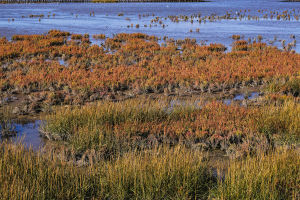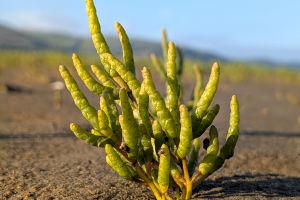Desertification, the gradual degradation of fertile land into barren areas, is a silent crisis affecting ecosystems worldwide.
While the causes are complex, including prolonged drought and soil mismanagement, one of the most effective tools against it is often overlooked: plants.
Far more than decorative elements of landscapes, plants serve as living shields, binding soil, regulating water cycles, and sustaining microclimates. Understanding their specific roles offers both hope and practical strategies for restoring fragile lands.
Pioneer Species: The First Line of Defense
In severely degraded areas, pioneer species are often the first step toward land recovery. Plants such as certain grasses, shrubs, and legumes thrive in poor soils where few other species can survive. Their root systems stabilize the topsoil, preventing erosion from wind and water.
Additionally, pioneer plants enrich the soil by fixing nitrogen or adding organic matter through leaf litter and decaying roots. Over time, this improves soil fertility, creating conditions suitable for more diverse plant communities. The selection of appropriate pioneer species is critical; their survival under harsh conditions directly influences the success of subsequent restoration efforts.
Windbreaks and Sand Dune Stabilization
Plants are also strategic barriers against wind and shifting sands. In arid regions, tall shrubs or fast-growing trees are often planted in rows to form windbreaks, reducing the force of strong gusts and limiting soil displacement. On sandy soils, certain grasses and shrubs are used to anchor dunes, preventing their migration and protecting nearby farmland.
The interweaving root networks of these species create a natural mesh that holds sand in place, demonstrating that even small-scale vegetation can have a profound impact on the landscape.
Water Management Through Vegetation
Beyond soil stabilization, plants influence local hydrology. Vegetation can enhance water infiltration, reduce runoff, and increase groundwater recharge. In arid lands, deep-rooted species can access water from lower soil layers, bringing moisture closer to the surface and supporting other plants.
Some species also release organic compounds that improve soil structure and water retention. By strategically selecting species suited to water-limited environments, land managers can create microhabitats that mitigate the harshness of prolonged droughts, enhancing both soil and plant survival.
Biodiversity as a Stabilizing Factor
Diverse plant communities provide multiple benefits for desertification prevention. Each species contributes differently: some stabilize soil, others improve fertility, while others attract pollinators or support small wildlife. By fostering biodiversity, restored ecosystems become more resilient to extreme weather events and invasive species.
Research shows that mixed-species plantings often outperform monocultures in long-term soil stabilization and ecological recovery, illustrating that complexity is a key element in sustainable desertification prevention.
Case Examples and Strategic Planting Approaches
Successful restoration projects often combine several strategies. For example, alternating rows of fast-growing trees with native shrubs can both stabilize soil and improve local microclimates. Using nitrogen-fixing legumes interspersed with deep-rooted grasses accelerates soil recovery.
In some semi-arid regions, contour planting along slopes reduces erosion and enhances water retention. These examples highlight that effective desertification prevention relies not just on planting vegetation, but on understanding how species interact with soil, water, and climate dynamics.
Conclusion: Growing Solutions, One Root at a Time
Plants are powerful allies in combating desertification. From pioneering species that initiate soil recovery to carefully designed plant networks that stabilize dunes and manage water, their strategic use can transform degraded land into thriving ecosystems.
Successful restoration is not a quick fix—it is a careful orchestration of biology, ecology, and patience. By harnessing the diverse capabilities of plants, humans can work alongside nature to halt desertification, proving that even the harshest landscapes can be revitalized with the right roots in place.

